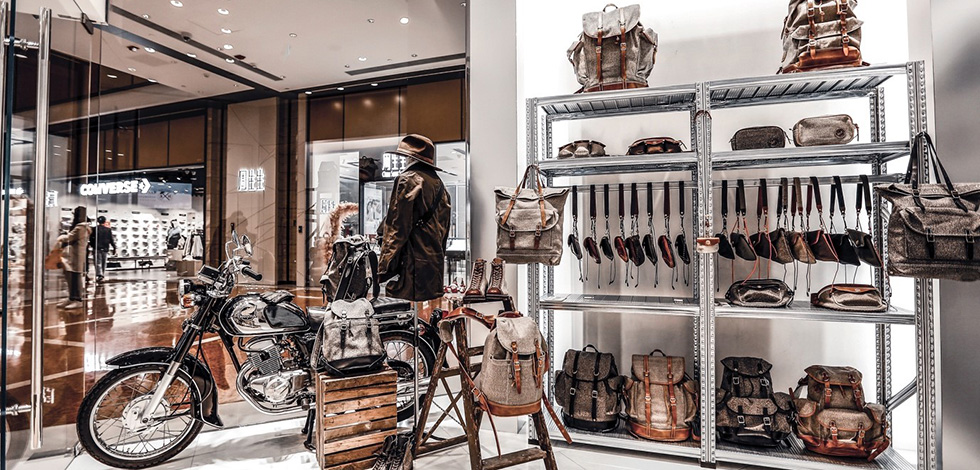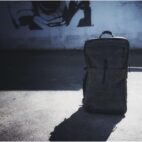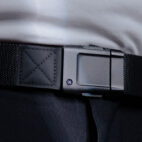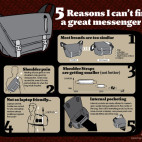An Interview With H&K Leather Workshop
Like many brands, H&K Leather Workshop started from humble beginnings. But a commitment to hard work, craftsmanship and technique has allowed H&K to flourish as one of China’s premier heritage-style brands. And this effort has placed them firmly as a brand leading the charge to swing perception around the ‘Made in China’ label.
Eager to delve into the brand’s design journey, we asked co-founder Chengxiang KANG to share his behind-the-scenes insights on creative inspiration, future plans, and more…
How would you describe your brand to people who are just discovering it?
H&K is a handmade leather goods brand based in Beijing.
Why did you want to start your own brand? What specifically attracted you to making bags and leather goods?
I studied art in school. As an art student, I always particularly favored handcrafts and handmade objects. I started to make handmade leather goods many years ago. After graduating from university, I worked in an advertisement company for a few years. Now when I look back, I think the idea of establishing my own brand began to sprout at that time.
Eventually, me and my wife, Yue HU, created our brand in 2012. The brand name, H&K, comes from the initials of my and my wife’s surname.
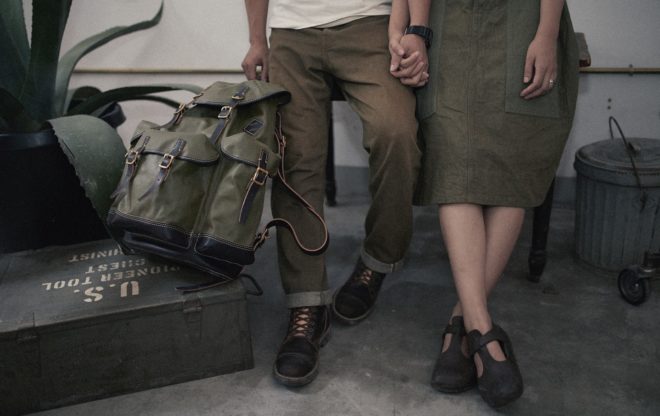
Photo of the couple, Kang and Hu
Your brand was founded in 2012 in a friend’s attic. How did you spread the word and help the brand grow from an attic operation to having your own retail space?
There was not much communication at the very beginning, only posts on my own social media account now and then, and word-of-mouth spreading among friends. The acceptance and affirmation from the market has encouraged H&K and brought us to today.
Can you share some images of your retail space? Do you have any particular influences for the layout and design of the space?
The design of the retail space shall stay in coherence with the brand profile and products. Currently, H&K has three brand shops in Beijing. The interior is designed by professional studios. But we have set master guidelines regarding the key material: it must be related to bags or bag making.
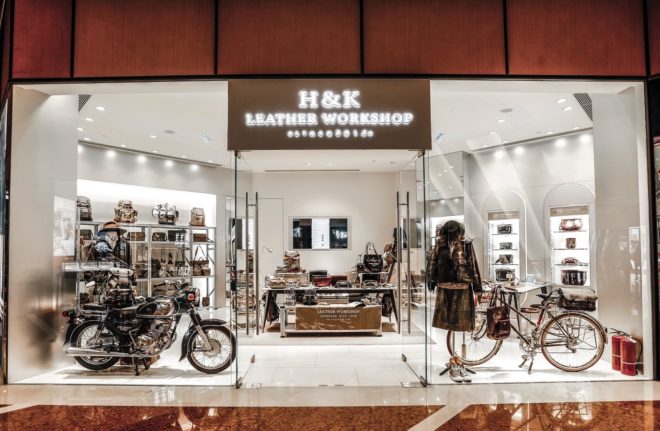
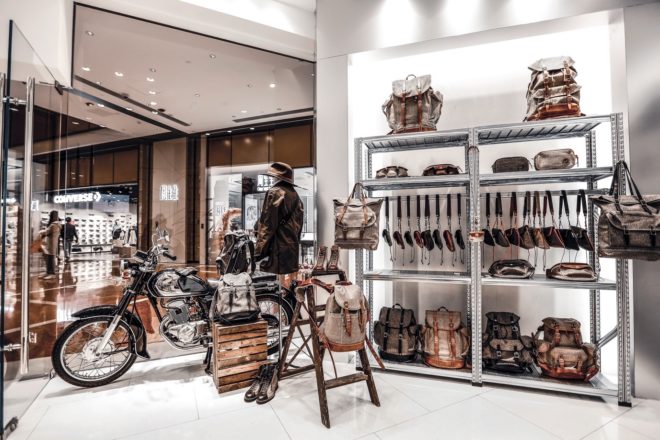
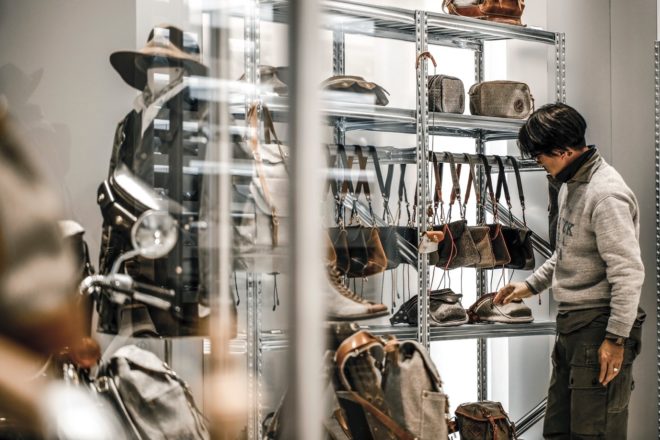
Photos of H&K brand shops in Beijing.
Taking our latest shop that opened in 2021 for instance, Aluminum was employed as the key material and applied massively in the space. Aluminum has many interesting qualities: light weight, unique texture, and a touch of futuristic mood. It was frequently used on vintage bags during the ’70s. When its futuristic touch mixes with H&K retro-look bags, it creates an amazing retro-futurism. I like it very much.
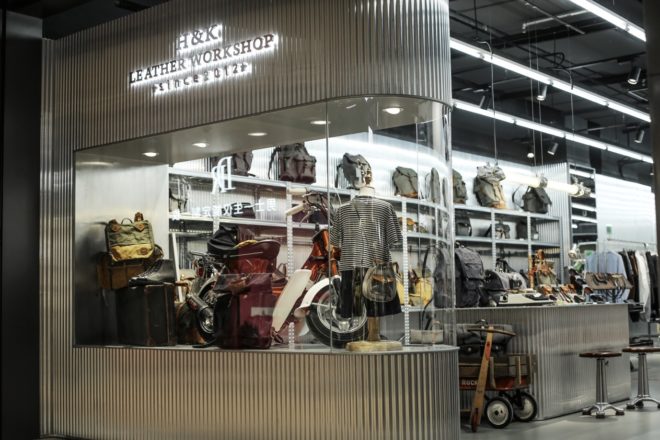
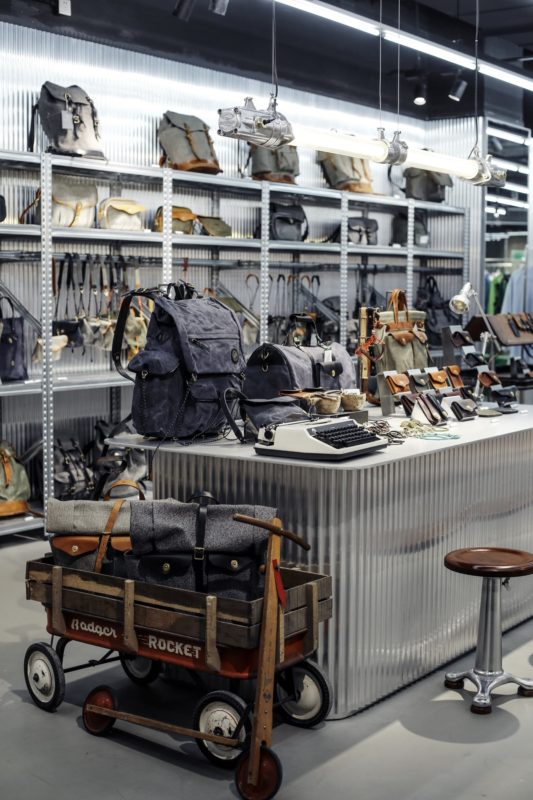
Photos of H&K brand shop with aluminum interior decoration.
What key elements or qualities do you value in product design? What must your products have or offer (for instance practicality, a particular aesthetic, durability, etc.)?
The material is definitely the key element to me. Good material is the base of tangible and visual pleasures. Good material deserves top craftsmanship, and together they contribute amazing qualities to products: good-looking, practical, durable, and a well-aging life cycle.
How did you learn your crafting skills? For example, leatherwork, sewing, and patternmaking?
I started from the ground up and learned it on my own.
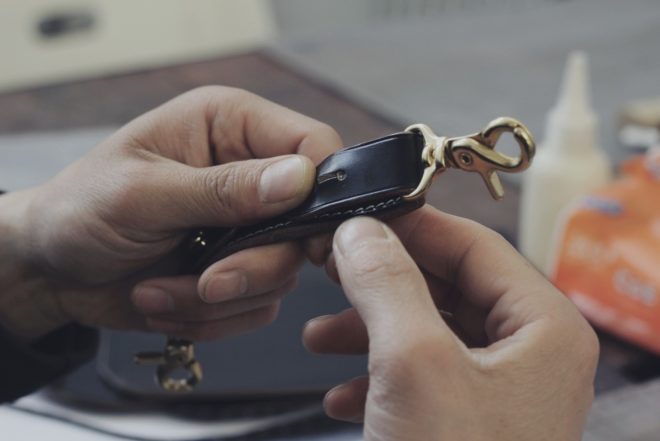
Where are your products made? Do you make products yourself or have a team crafting them?
In our workshop in Beijing.
Can you share an image of your workspace and the tools you use?

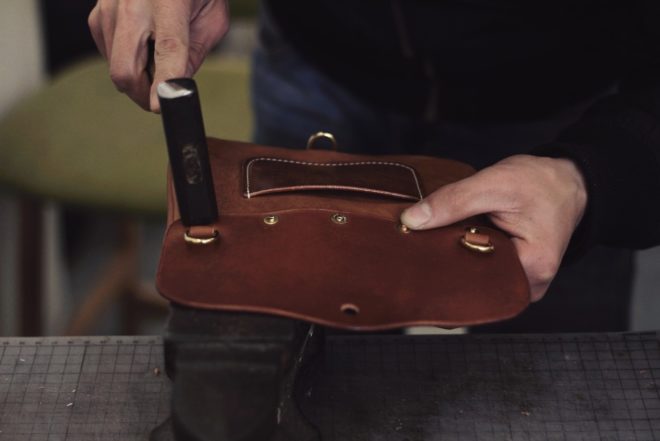
Photos of Kang working in the studio
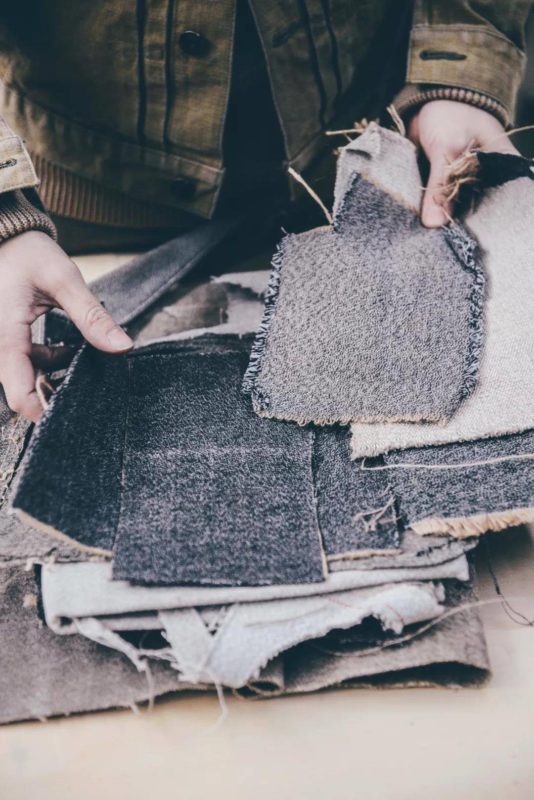
Photos of Kang working with the brand’s “Salt & Pepper” fabrics.
Where do you source materials for your products?
Horween leather from the States, vegetable-tanned bovine leather from Italy.
Our iconic “Salt &Pepper” fabric is customized in China.
What are your favorite materials to work with and why? Conversely, have there been any materials you’ve struggled to work with?
I am obsessed with leather and canvas because they are natural and original. These two materials, one comes from animals, one from plants; together they make bags more practical and durable. You can find this particular combination on vintage bags from a century ago. It’s a combination that has withstood the test of time.
Out of all your brand offerings, what is your favorite piece and why?
All. (laughs)
We hope every single H&K bag will become a classic product. For this reason, we put in a lot of effort during every single bag development before we present it to our consumers.
Your brand incorporates a variety of inspirations, from military to retro styles and more. How do you bring these different inspirations together in a cohesive design language?
Lots of my inspirations often come from vintage army bags. At H&K, we apply our brand visual signatures on different prototypes dated back to diverse periods to present a visual consistency. Our visual signatures include the leather/canvas material, brass metalware, and the flap with our iconic curve.
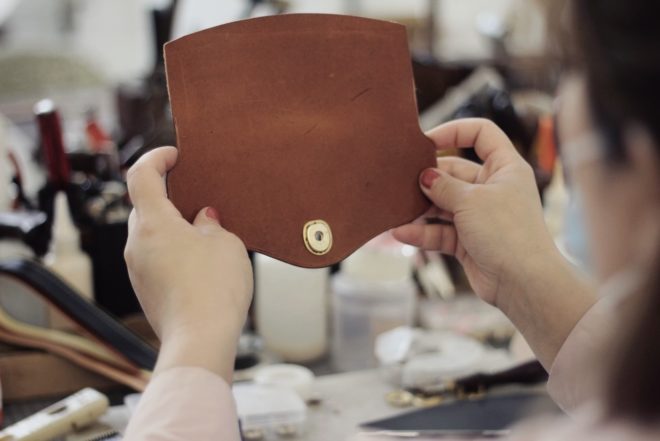
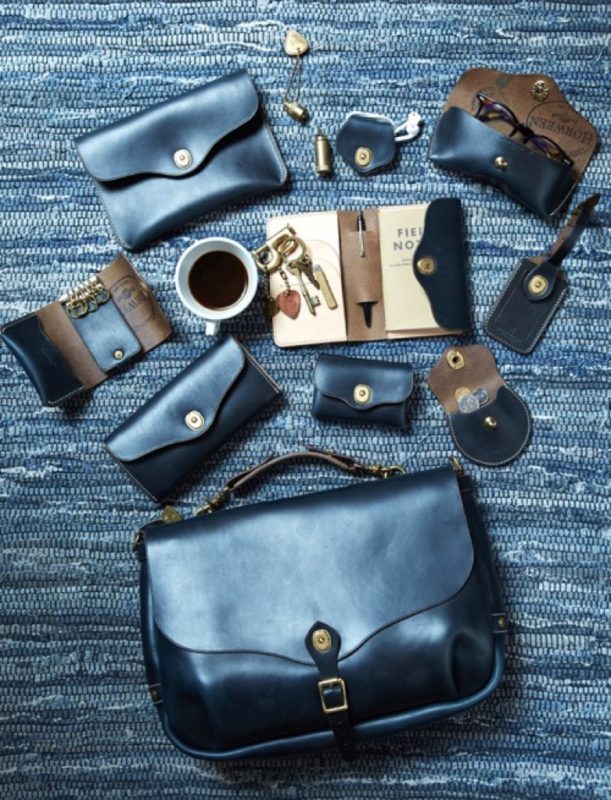
Photos of H&K iconic flap curve.
Sometimes products are associated with inferior quality simply because they are made in China. Are you hoping to change those perceptions with H&K Leather Workshop? Is that an important consideration and goal for your brand?
Yes, it is true that the label “Made in China” has been associated with inferior quality for quite a while. But nowadays there have emerged growing Chinese brands who are engaged in the quality segment with an artisan attitude, just like H&K. I believe there will be more and more Chinese brands standing for good quality, presenting the new landscape of “Made in China” to the world. I also hope H&K will be discovered and favored by more and more retro lovers all over the world.
You’ve done a few collaborations. What do you value or look for in a collaborator?
Their value about products and understanding of brand will be my main concerns.
Do you have a favorite collaboration?
H&K x Brother Bridge Boxer Boots Collection
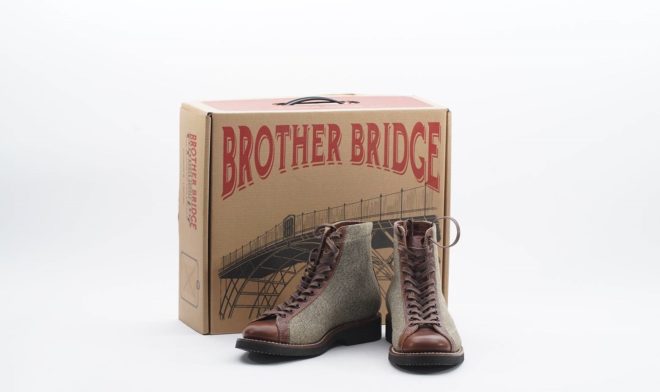
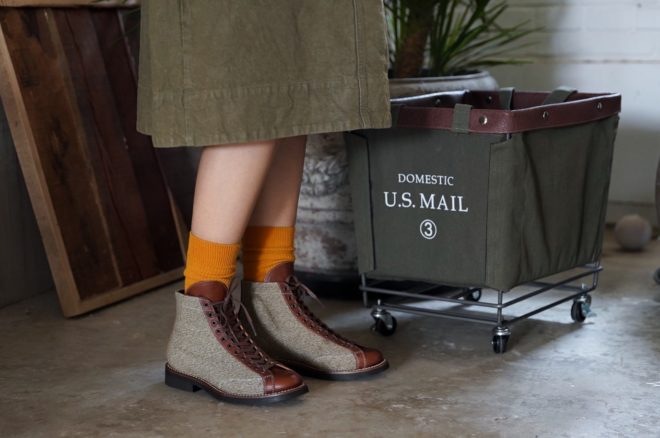
Photos of the Boxer Boots from H&K x Brother Bridge Collection
We’d love to see what you carry every day (or at least regularly). Can you share a picture of your EDC (everyday carry)? The items you carry in your pockets or bag daily?
Well, I am not typical in this case. I have a huge amount of bags because I love bags. BUT I barely carry one in daily scenarios during recent years. I only grab my cellphone and keys and put them in my pockets. (laughs)
Some work days may be harder than others. Some days creativity will flow easier than other days. How do you stay inspired and motivated each day to do what you do and keep designing and creating new offerings?
Old bags have been a constant inspiration in my design. I have collected more than 300 pieces of vintage bags. Most of my collection is presented in the H&K Vintage Bag Museum and is open to the public.
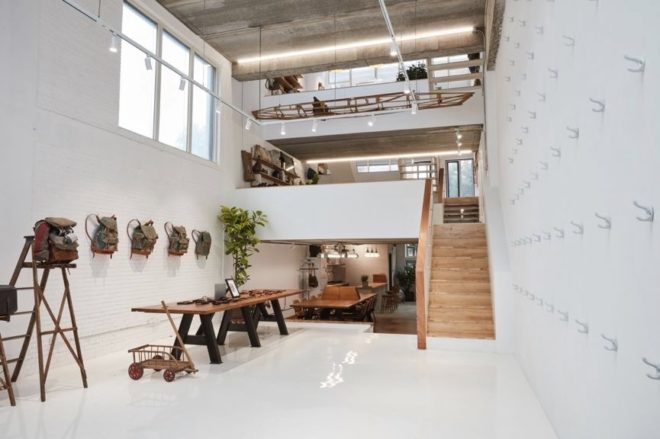
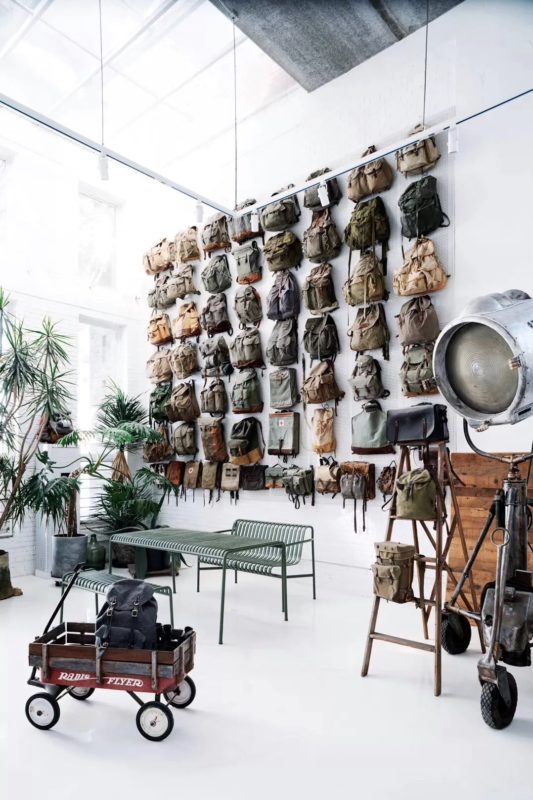
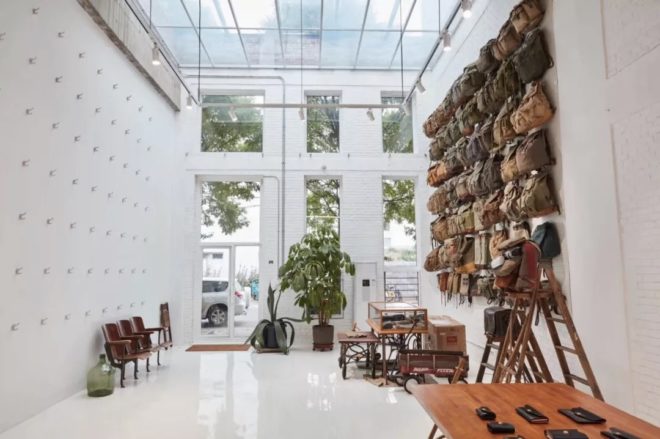
Photos of H&K Vintage Bag Museum
But inspirations don’t knock on my door every day. Sometimes when I found myself stuck, I would turn to my hobbies: outdoor sports, skateboarding, snowboarding, camping, and fishing. Staying outdoors and enjoying activities I like is a good path to refresh myself and come across new ideas. I like to observe. The approach would be something like: 1. Observe. 2. Find a new need. 3. Come up with a design solution to meet the need.
Creating and running your own brand can be challenging and time-consuming. How do you maintain a productive work/life balance? Are there any routines you follow each day or particular hobbies or activities you do when you need to take a break and recharge?
This is the ultimate question for all entrepreneurs. My answer is you cannot maintain a perfect balance. Work and life are woven together and it’s not easy to draw a clear borderline. Personally, the best balance for me is to develop hobbies related to my work, or you can say work in the field related to my hobbies.
Currently, I am enthusiastic about camping, fishing, and skateboarding. And you will see how my hobbies are woven into my upcoming collections, soon I hope.
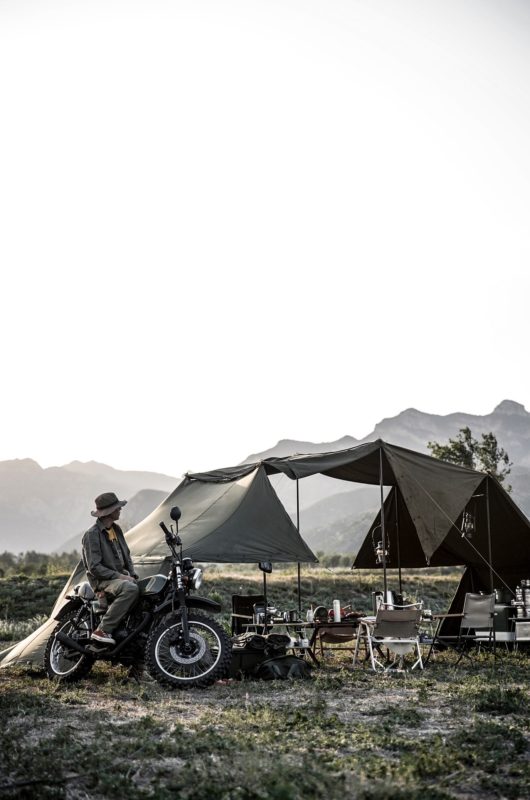
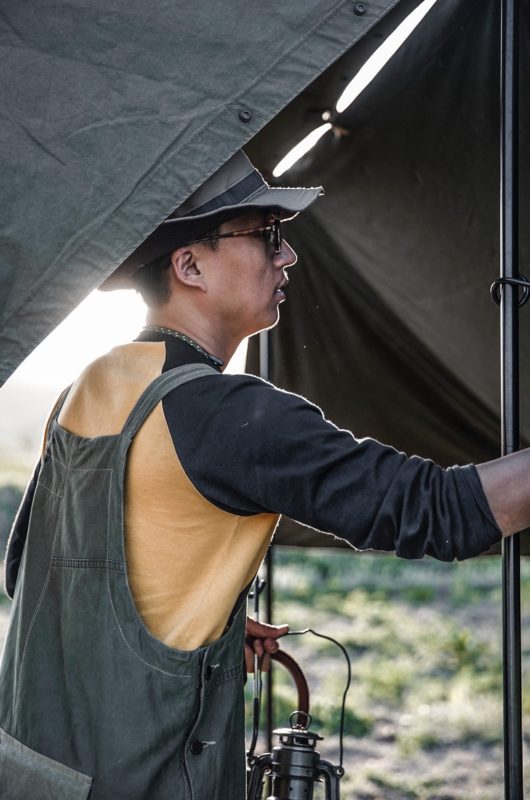
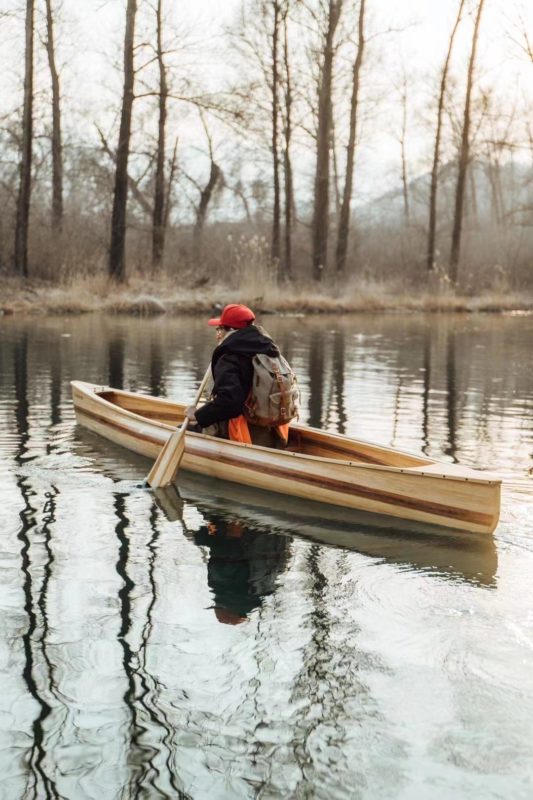

Are there any particular brands or creators that you looked up to or who inspired your own work? Both from when you were just starting out and today as an established brand yourselves?
You have a history in advertising, art, and design. If you weren’t involved in leathercraft and making bags, are there any other career paths you would be interested in pursuing?
I would say café. But it’s actually already done.
Lifestyle is the core that I want to deliver, and leather making is only one approach of the lifestyle I want to share with others. In October 2021, we opened our brand café H&K+ in Beijing. It is a cozy courtyard where you can taste a good coffee and creative fusion food. It is also our brand space that demonstrates my lifestyle and offers an immersive experience to our guests.
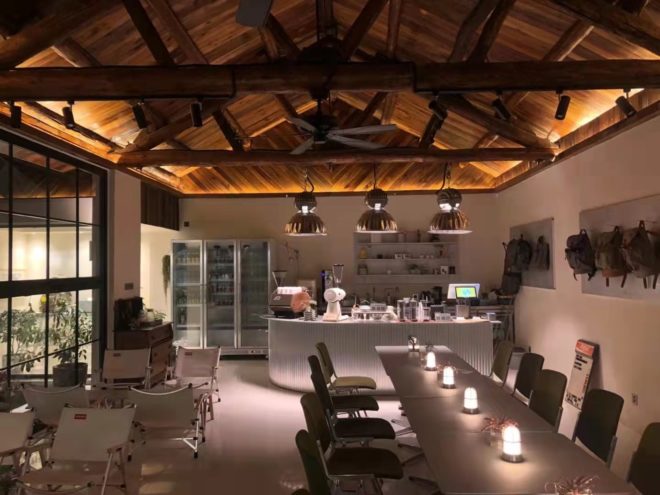
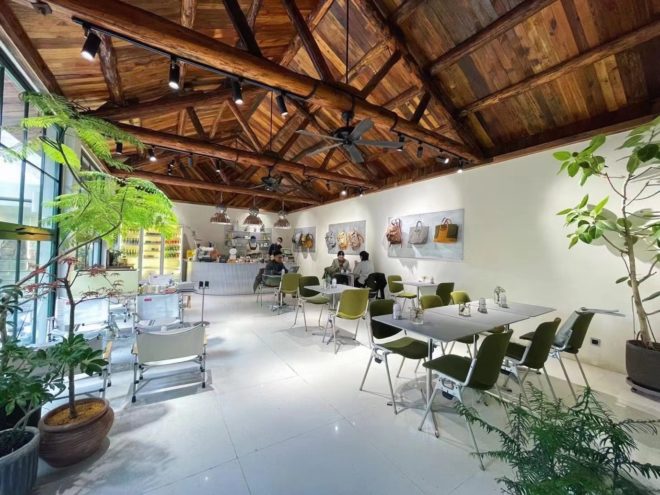
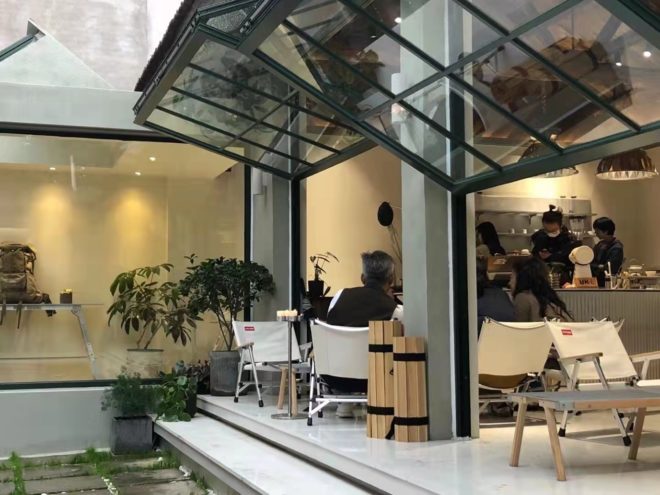

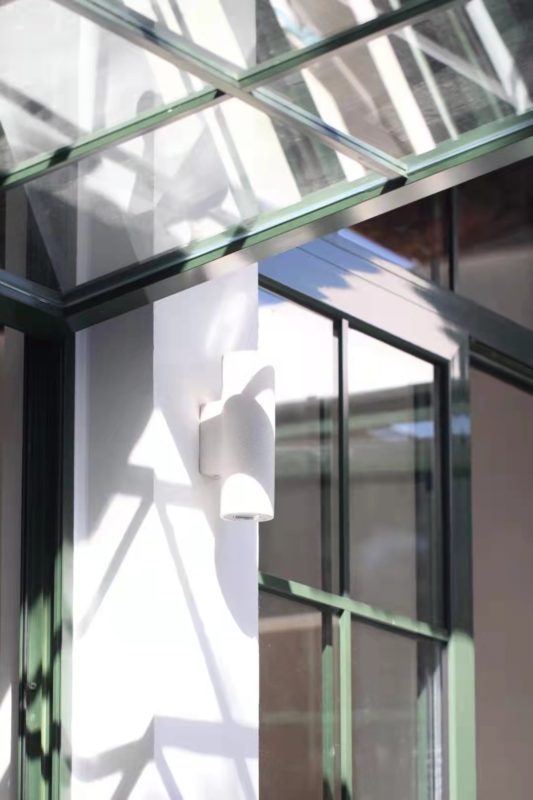
Photos of H&K+
What’s been the greatest challenge you’ve overcome in your brand journey?
As a former art student, the organizational management is a very important subject to learn. H&K was founded with a tiny team of two, me and my wife. And it has grown into a sound team with three brand stores during the past nine years. How to keep the entire team energetic and productive will be the vital impact factor for the brand’s development.
What are your top tips or advice for other makers and people who want to start a brand?
Find something you love and believe. Carry on.
What’s on the horizon for H&K Leather Workshop? Are there any intriguing brand developments planned that you can share with us? Perhaps a new collaboration in the works or a new product design?
Collection 2022 will be more lifestyle-oriented. It will embody some outdoor activities that I am enthusiastic about, like fishing for instance.





 Carry Awards
Carry Awards Insights
Insights Liking
Liking Projects
Projects Interviews
Interviews
